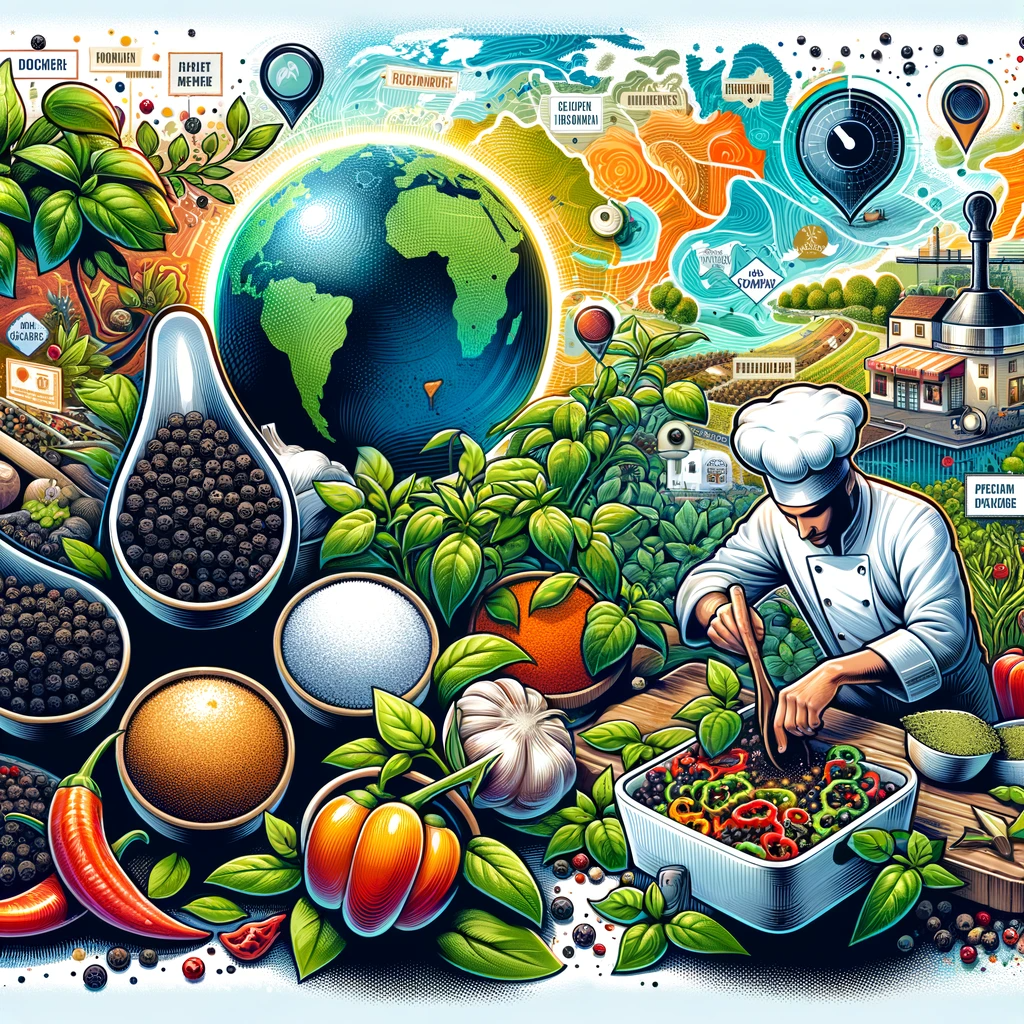Pepper, a versatile spice, plays an indispensable role in American cuisine. Beyond its fiery heat, pepper offers a rich tapestry of flavors and aromas that have become an integral part of the nation’s culinary heritage. In this article, we will delve into the multifaceted role of pepper in American cuisine, exploring its various types, historical significance, and the traditions that have evolved around it.
The Different Varieties of Pepper
1. Black Pepper
Black pepper, often referred to as the “king of spices,” is the most common type used in American cooking. It originates from the berries of the Piper nigrum plant and boasts a robust, pungent flavor with subtle earthy notes. Black pepper is primarily known for adding a sharp, spicy kick to a wide range of dishes.
2. White Pepper
White pepper, derived from the same Piper nigrum plant as black pepper, undergoes a different processing method. The outer skin of the berries is removed, resulting in a milder, less pungent flavor profile. White pepper is often used in creamy sauces, soups, and dishes where its distinct flavor can shine without the visible specks of black.
3. Green Pepper
Green pepper is unripe black pepper berries harvested before they turn red. It offers a fresher, fruitier flavor with a less pronounced heat. In American cuisine, green pepper is frequently found in pickles, relishes, and certain types of seasoning blends.
4. Pink Pepper
Pink pepper, despite its name, is not a true pepper but rather the dried berries of the Schinus molle tree. It imparts a subtle sweetness and fruity undertones, making it a delightful addition to salads, seafood, and even desserts in modern American cooking.
Historical Significance
Pepper in Early American History
Pepper has a long history in the United States, dating back to the early colonial period. It was a prized and expensive spice during this time, often referred to as “black gold.” Pepper, along with other spices, was an essential commodity in trade, influencing the nation’s economy and culinary traditions.
Influence on Southern Cuisine
Pepper’s significance in American cuisine is especially evident in Southern cooking. The use of black pepper is prevalent in dishes like gumbo, jambalaya, and blackened catfish. It contributes not only heat but also complexity and depth of flavor, making these dishes iconic representations of American culinary heritage.
Modern Uses and Traditions
Fusion Cuisine
In recent years, American chefs have embraced fusion cuisine, blending different culinary traditions to create unique dishes. Pepper plays a crucial role in these innovative recipes, adding depth and character to fusion dishes that draw inspiration from various cultures.
Seasoning Blends
Pepper is a key ingredient in numerous American seasoning blends, such as Cajun seasoning, chili powder, and BBQ rubs. These blends are used to enhance the flavor of meats, vegetables, and even snacks like popcorn, contributing to the diverse and vibrant American palate.
Conclusion
Pepper’s role in American cuisine extends far beyond its fiery heat. It is a symbol of the nation’s culinary heritage, with a rich history and diverse range of varieties. From the colonial era to modern fusion cuisine, pepper has left an indelible mark on American cooking. Embraced for its versatility and ability to elevate flavors, it continues to be a beloved ingredient in kitchens across the nation, preserving traditions and forging new culinary paths. Whether you’re savoring a classic Southern dish or exploring the innovative world of fusion cuisine, pepper remains an essential cornerstone of American gastronomy.
